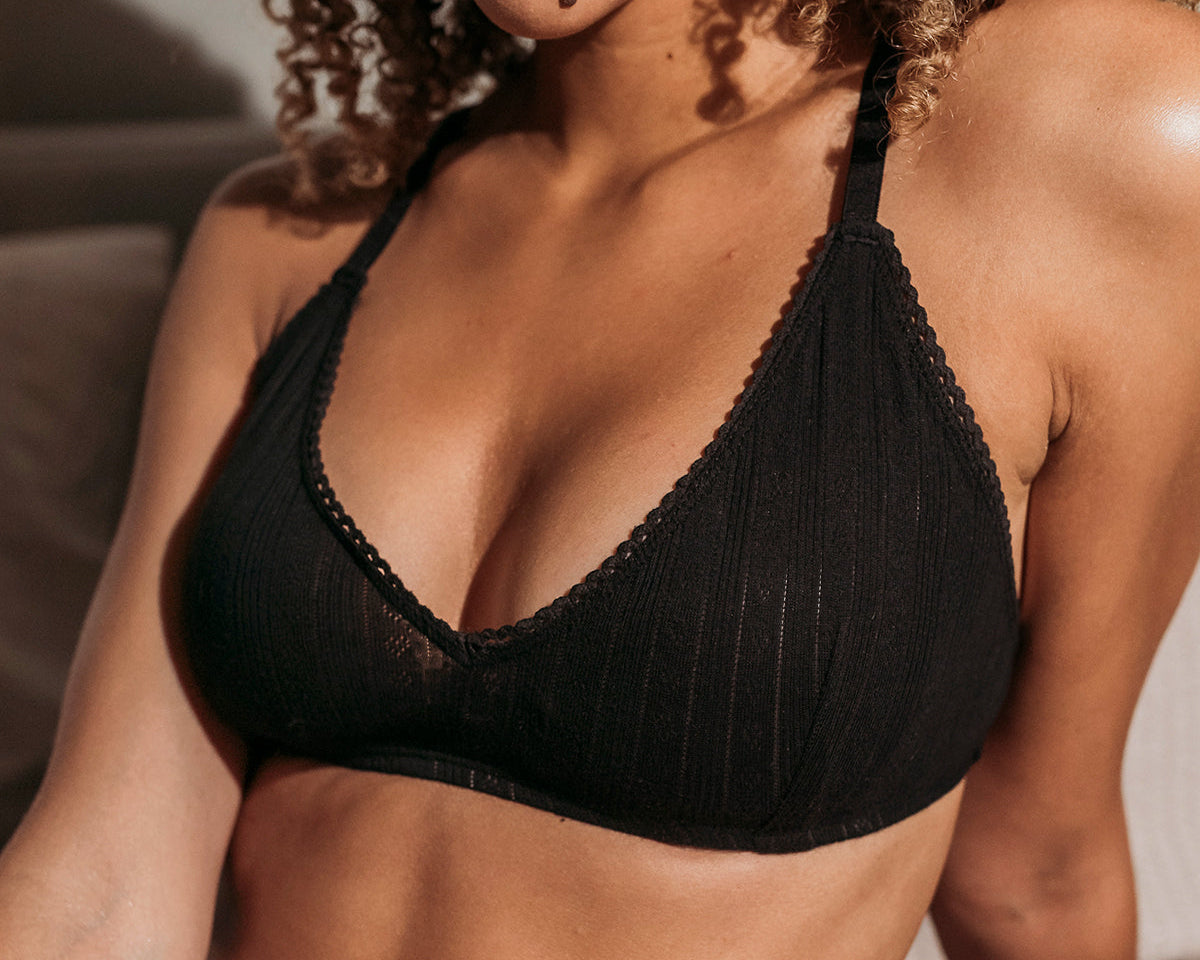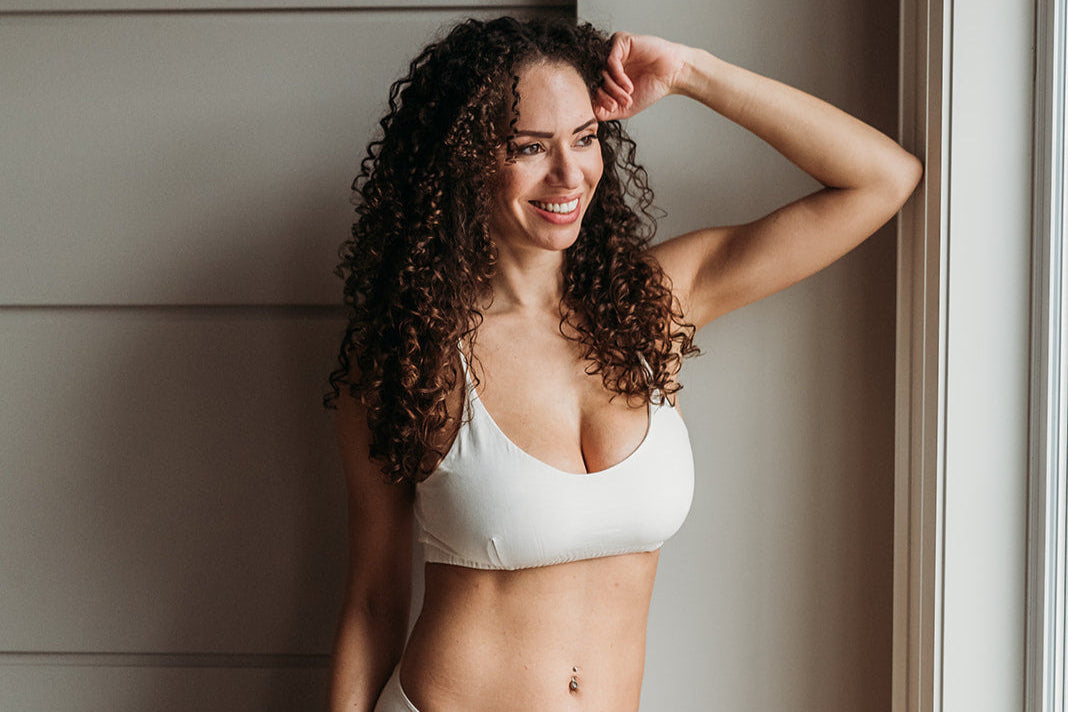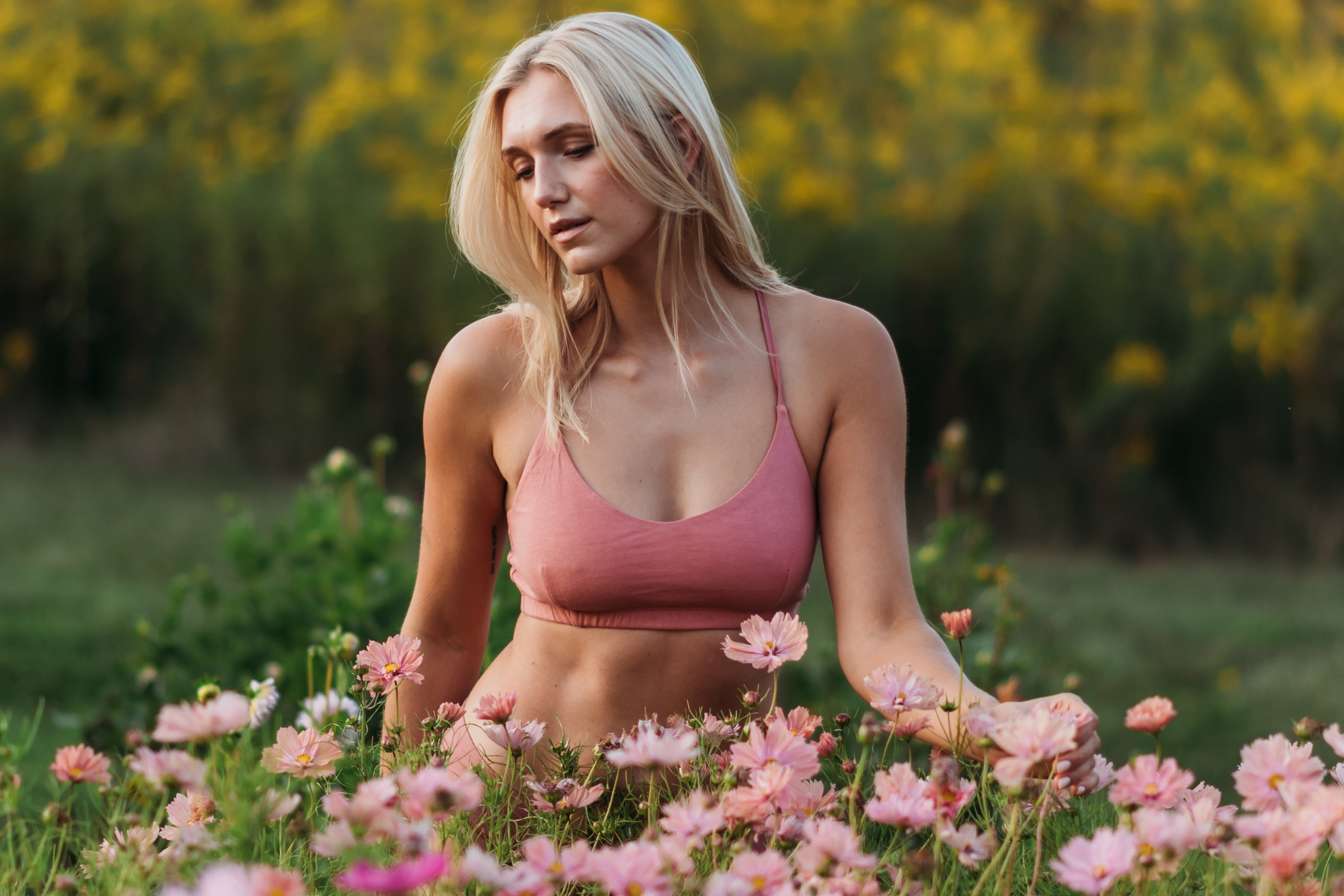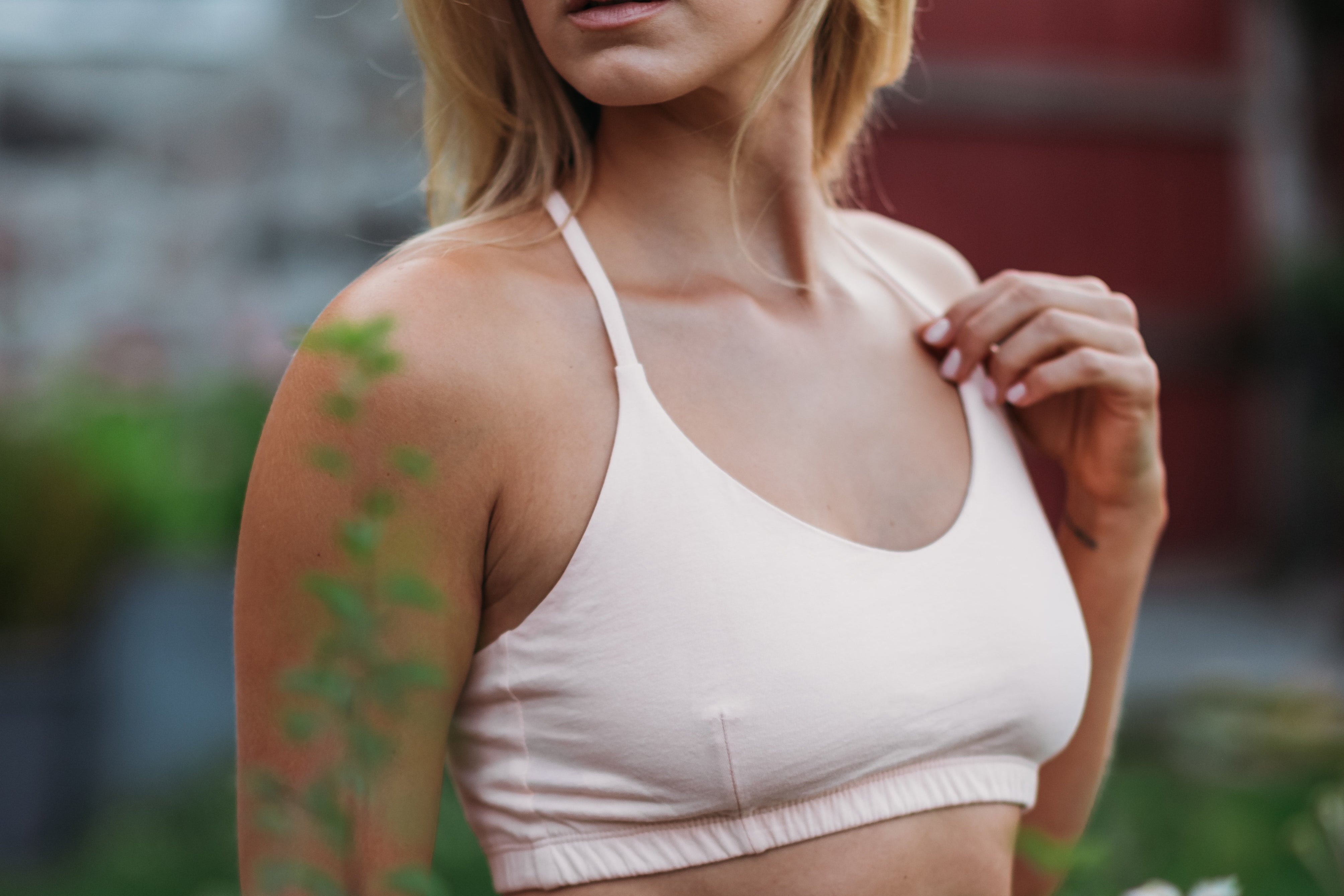
What Is Pointelle Fabric? A Beginner's Guide
You've probably seen it without knowing what to call it. That delicate knit with tiny decorative holes forming patterns across the surface – sometimes flowers, sometimes geometric designs, occasionally just scattered openings that let skin peek through. That's pointelle, and it's having a serious moment in sustainable fashion.
In other words, pointelle is a type of knit fabric, often made from organic cotton, known for the small, decorative holes that create a design resembling lace.
Originally a specialty knitting technique, pointelle has evolved from vintage undergarments and baby clothes into mainstream territory. The appeal makes sense: it’s lightweight, breathable, visually interesting without being fussy. When made with organic cotton, it becomes even better – a textile that looks beautiful, feels great, and doesn’t harm the environment.
Understanding Pointelle Fabric
So what is pointelle fabric, exactly? It's a knit textile where holes aren't defects; they're the whole point. During knitting, specific stitches get intentionally dropped or skipped to create openings that form decorative patterns. Unlike woven fabrics or prints applied to surfaces, pointelle's design is structural. The holes are as much a part of the material as the threads themselves.
The technique dates back to the 1800s. Back then, people wanted breathable undergarments and baby clothes that wouldn't overheat delicate skin. Victorian sleepwear loved pointelle detailing. Children's clothing capitalized on how airy it felt. Gradually, designers realized this wasn't just functional. It looked good too.
Fast forward to today, and you'll find it everywhere. Casual tops. Dresses for warm weather. Loungewear sets. Cardigans thrown over tank tops. Some activewear even uses pointelle panels where ventilation matters most.
What makes this different from other textiles? The knitting method itself. Most patterns get printed on or woven in. Pointelle creates its design through dropped stitches and yarn-over moves. Needles skip certain spots on purpose, leaving controlled gaps that won't come undone. This construction means air flows through constantly, exactly why it's perfect when the temperature climbs.
Pointelle Fabric Made with Organic Cotton
Take something already great and make it from organic cotton, and suddenly you're onto something truly special. Cotton pointelle fabric is one of the best materials to wear, for several reasons.
Growing organic cotton means ditching synthetic pesticides and fertilizers that conventional farming relies on. The benefits are clear, and backed up with science. A recent study by the Organic Trade Association confirms that organic cotton means healthier soil, cleaner water systems, safer conditions for farmworkers. Organic agriculture uses less water, eliminates chemical runoff, and maintains soil vitality through practices like crop rotation. It's farming that works with ecosystems instead of against them. When you compare organic cotton vs regular cotton, the difference becomes even more obvious. Organic production supports cleaner ecosystems and gentler clothing that’s better for your skin.
But it’s not all about saving the planet. There's a personal angle here too. Organic cotton is hypoallergenic because harsh chemical residues don't cling to every fiber. Sensitive skin types notice right away: no itching, no weird reactions. It breathes better since processing doesn't clog up cotton's natural structure with treatments.
Our Pointelle Collection at Q for Quinn focuses on where organic cotton matters most: underwear that touches your skin all day. The pointelle construction keeps things breathable and lightweight, which is exactly what you want in bras, boxers, and thongs. Every single garment is made with GOTS-certified organic cotton, making it a perfect example of truly organic cotton lingerie designed for comfort, breathability, and sensitive skin.
Key Benefits of Pointelle Fabric
Breathability wins the top spot. 1All those little holes create pathways for air. Heat can't get trapped against you. Sweat evaporates fast. Perfect for lightweight pieces when it's hot out. No clingy, suffocating feeling that some knits give you. Unlike some synthetic materials, organic cotton feels breathable and soft against your skin, without that clingy, suffocating feeling that some knits give you.
The durability of pointelle shocks people because it looks so delicate. Here's the thing: the knitting technique that makes those holes actually strengthens everything else. The stitches lock together securely. The openings themselves get bound by surrounding stitches that stop fraying or stretching out. Quality versions, especially organic ones, can handle regular wear and countless washes without losing their integrity.
Most pointelle garments have natural give from being knitted. The material stretches when you move, then bounces back. Your clothes fit comfortably, without being restrictive.
Choosing organic cotton pointelle for your closet is also an environmental statement. Fast fashion has trained us to treat clothes like they're disposable. Investing in sustainable textiles flips that script entirely. These pieces last longer, feel better against the skin, and leave smaller environmental footprints from field to landfill.
You can find these benefits in our Organic Cotton Underwear Collection and our Organic Cotton Bra Collection.
Is Pointelle Fabric Good for Summer?

Absolutely. Pointelle might be one of the smartest warm-weather picks out there.
The hole patterns do real work beyond looking pretty. Its ventilation is built in. Air moves through constantly. Your skin actually breathes. Even when humidity makes solid knits feel like torture, pointelle stays comfortable. The open construction prevents that sticky, trapped sensation.
Weight-wise, it's minimal. Summer demands clothes that feel light, and this material delivers. Cotton naturally cools. Combine its breathability with pointelle's airy design and you get pointelle cotton fabric that actively regulates body temperature. Heat escapes instead of building up.
Both traditional and organic versions offer cooling benefits, though organic processing, with no chemical treatments involved, allowing airflow even better through its natural fiber structure. Either way, pointelle is perfect for hot weather.
When shopping for the summer, keep in mind that pointelle cotton fabric properties change depending on the knit gauge. Tighter knits with smaller holes work better for structured garments like fitted tops. Looser knits with larger openings excel in flowing pieces like summer dresses. The hole size affects everything; how much it stretches, how sheer it appears, even how much cooling you get.
Frequently Asked Questions About Pointelle Fabric
What is pointelle fabric?
Knitted cotton with decorative holes engineered during the knitting process. The fabric features patterned openings (geometric, floral, scattered) that create visual interest while keeping the material breathable and lightweight.
Is cotton pointelle stretchy?
Yes, it's got natural give from the knit construction. How much stretch depends on specific techniques used, but pure cotton versions offer comfortable flexibility that moves with you.
Is pointelle fabric good for summer?
Ideal for it. The holes ventilate, cotton breathes on its own, and the lightweight construction keeps you cool. It's specifically designed for warm weather since air flows freely through the material.
What are the benefits of pointelle fabric?
Breathability, featherlight comfort, built-in stretch, interesting texture, and surprising durability despite looking delicate. If made with organic cotton, add eco-friendliness and hypoallergenic properties of organic cotton to that list.
Does pointelle shrink after washing?
Cotton versions can shrink a bit, especially if you use hot water or high heat in the dryer. Minimize this by washing cool and air drying, or stick to low heat.
Does 100% cotton pointelle fabric exist?
Yes, 100% cotton pointelle fabric is quite common. Pointelle refers to the knitting technique (the decorative holes), not the fiber content, so it can be made from pure cotton, or blends with spandex, wool, or synthetics. Pure cotton versions are popular for underwear and summer clothing because they're more breathable and hypoallergenic, getting their stretch from the knit structure itself rather than added elastic fibers.















